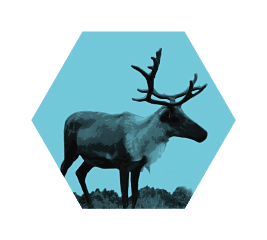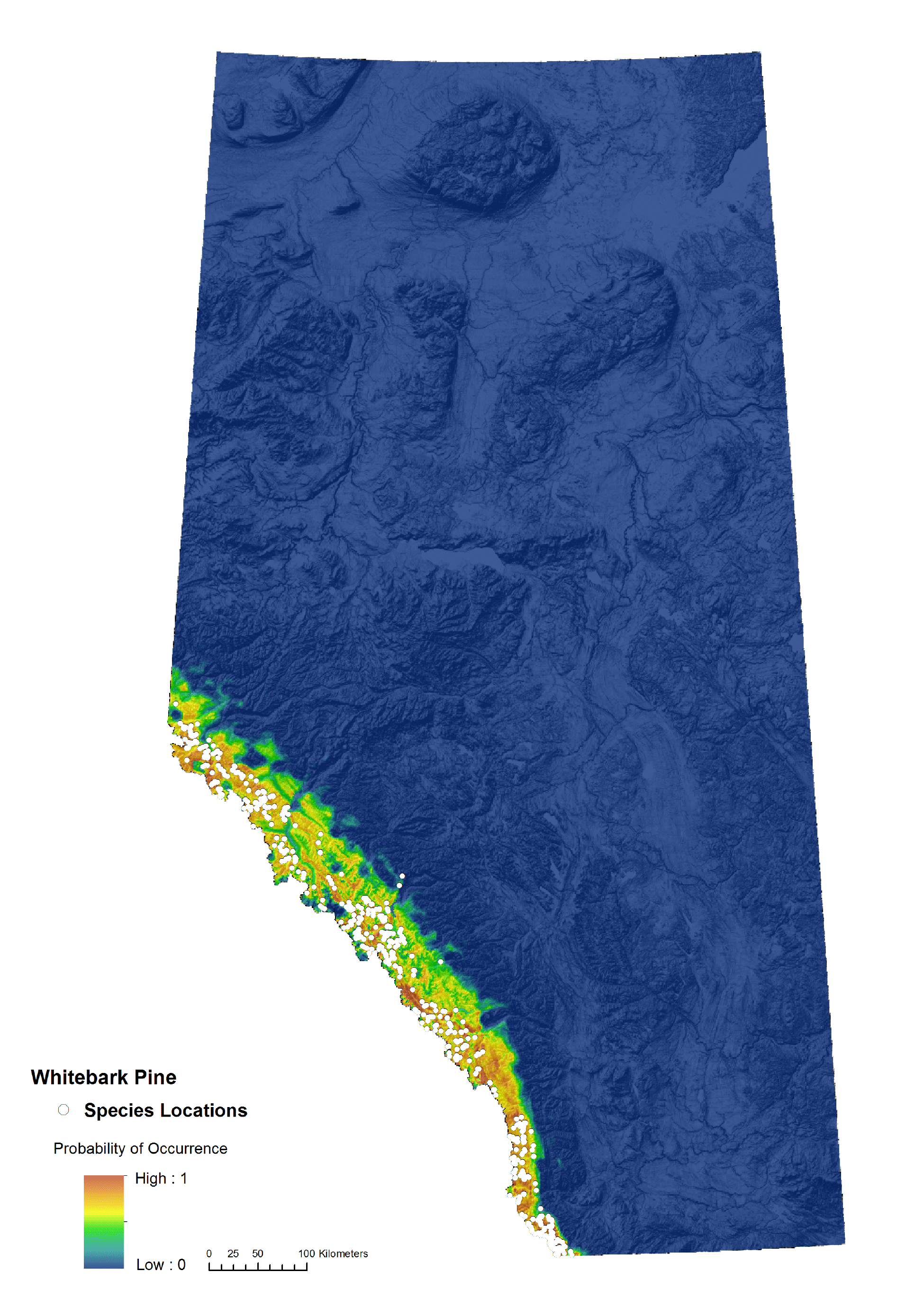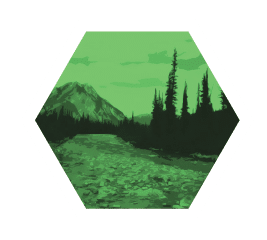Conservation Blueprint of Northern Alberta
The Conservation Blueprint is a tool developed by CPAWS Northern Alberta that illustrates areas of high priority for conservation in northern Alberta. It takes into account biodiversity, linear disturbance, forestry, and oil and gas activity.
We live in an era of increasing land use and human development that has resulted in species going extinct at a rate 100 to 1000 times faster than before humans inhabited this planet. The cause of this mass extinction are habitat loss, habitat fragmentation, overexploitation, and competition with invasive species – all causes directly or indirectly related to human activities.
Protected areas are the foundation of both regional and global conservation strategies. Setting aside parks and protected areas that preclude human industrial development is necessary for a diversity of species to survive. In addition to protecting biodiversity, protected areas ensure that communities have clean water to drink, help moderate climate by storing carbon, and offer an opportunity for people to connect with nature.
Recent scientific studies have shown that in order to maintain current levels of biodiversity and allow for healthy ecological processes such as forest-renewing fires, carbon capture and storage, and air and water filtration, at least 50% of a landscape needs to be protected.
The Conservation Blueprint also considers both the economic value of Alberta’s natural resources and the impact of linear disturbance on the landscape when planning for protected areas.


Species, Human Influence, and Habitats

Fine Filters Conservation Features: Species Range
An example of one of the 202 culturally important and species at-risk distribution models (in this case, the endangered whitebark pine) that were combined to help model, or predict, the areas with the greatest chance to provide optimal habitat for the greatest number of irreplaceable, rare and diverse species in Alberta.
The model is based on 46 environmental predictor variables ranging from elevation, natural regions, landcover, wetlands, surficial geology, and climate.
This information can then be used to ensure species habitats are represented in a protected area design.

Linear Feature Footprint
A linear feature footprint helps to show the scale of human disturbance to a landbase, and can help prioritize areas that have less human impact and are more intact. Linear feature footprints include the visible alteration or conversion of native ecosystems to temporary or permanent residential, recreational, agricultural, or industrial landscapes.
The definition includes all areas under human use that have lost their natural cover for extended periods of time, such as cities, roads, agricultural fields, and surface mines. It also includes land such as forestry cutblocks and seismic lines that are only disturbed every so often, since these changes still alter the natural function of the area.
As a greater percentage of an area is disturbed, it increases the likelihood that important ecological functions will be altered or diminished. A linear feature footprint works both to help prioritize less disturbed ecological areas for protection as well as limit the impact on existing socio-economic values.

Course Filter Conservation Features
An example area showing some of the course features used within the Conservation Blueprint, including biological, geological, climatic and landscape conditions:
Natural Subregions of Alberta (top left)
These regions are defined on the basis of landscape patterns, vegetation, soils, physical features, climate, topology, and geology. There are 6 natural regions and 21 subregions in Alberta.
Landscape Classes (top right)
These classes indicate the spatial distribution of land cover classes on the landscape, including water, snow/ice, rock, shrubland, grassland, agriculture, coniferous forest, broadleaf forest, mixed forest, and urban or industrial developments.
Surficial Geology (bottom left)
The spatial arrangement of geological deposits of sediments, important for surface geochemistry and determining soil characteristics. Soil is a crucial requirement of almost all plant life, and knowing the geology of the area can help play a role in determining if certain plant species can thrive there or not.
Climate Moisture Index (bottom right)
Shows the relative degree of moisture available to support plant growth on an annual basis. Some plants thrive in drier conditions, and some need very wet conditions. Knowing the annual amount of moisture available can help determine the areas with ideal growing conditions for these species.
Conservation Priority Areas

Conservation Priority Areas
The Conservation Value map identifies priority areas based on multiple planning scenarios, using fine and course filter conservation features as surrogates for biodiversity. These features include physical features of the land (Figure 2 and Figure 3) as well as the ranges of rare or at risk species (Figure 1). A conservation value was assigned to each 500 hectare hexagonal planning unit across the province, with these values determined by combining:
Irreplaceability (the number of times a planning unit is selected, in that a planning unit that has rare or unique features will be ‘irreplaceable’ and always selected);
Rarity (the rating of each at-risk species, with federally-listed Endangered species given the highest ranking and provincially-listed Sensitive species given the lowest ranking);
Diversity (the number of different conservation features found in each planning unit); and
Richness (the amount of each conservation feature per planning unit).
The model was set to run 100 times for each of the nine scenarios, which included three broad conservation targets (20%, 50% and 80% protection) for each of the three socio-economic ‘cost’ factors (no cost, minimizing linear features and avoiding areas with a higher net present value [which encompasses resource flows, revenues, and costs over time at the township level for forestry and the oil and gas sector]).
Each run had a goal to produce a ‘good’ protected areas network, producing a number of different arrangements in which targets could be met. When added together, planning units that were chosen more often across received a higher conservation value: the more times a particular area was chosen across all modelled scenarios, the more valuable that area was in helping meet overall conservation targets.
In Alberta, only 14.9% of our landscape is protected (as of the beginning of 2020).
Now is the time for Alberta to take action – to protect at least 20% by the end of 2020, 30% by 2030 and 50% forever, for the benefit of both future and current generations!

The Conservation Blueprint was developed using current, science-based, geographic information systems (“GIS”) and mapping methodology and identifies high-value areas for conservation in northern Alberta. It is meant to be used by government, ENGOs, industry, and community partners in protected areas and regional land use planning
in northern Alberta.
The Conservation Blueprint is a comprehensive tool, taking into account coarse, landscape-level features, like climate, surficial geology, or landscape classes, that may drive conservation. It also included finer-scale habitat preferences of at-risk plant, animal, and insect species in the province of Alberta.

What is CPAWS doing?
The Conservation Blueprint is a comprehensive look at where Alberta needs to go in protected areas planning in order conserve our wilderness for future generations.
The data is abundant, the model ran for days on end, and the maps illustrate many different scenarios for the province. However, this Conservation Blueprint is really a living, breathing document.
Thus, the Conservation Blueprint is truly an iterative series of maps, capable of moving and working with changing times, people, and climates, both political and ecological.
CPAWS Northern Alberta will use the Conservation Blueprint to collaborate with stakeholders on:
Make a donation
Move conservation forward in Alberta.
Lasting protection for nature and wildlife in Alberta doesn’t happen overnight (although we wish it did)! Your donation fuels our fight for nature. Donate to support CPAWS Northern Alberta’s conservation efforts.


